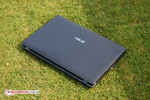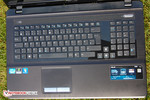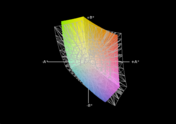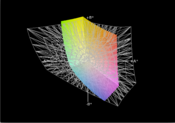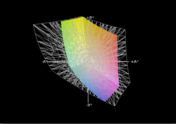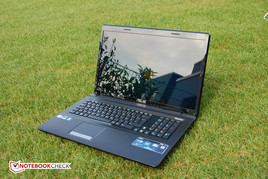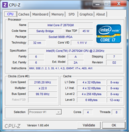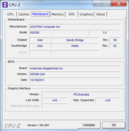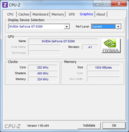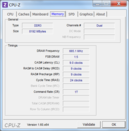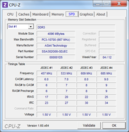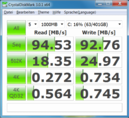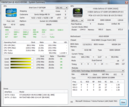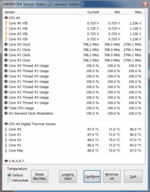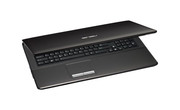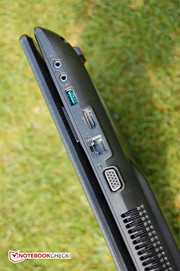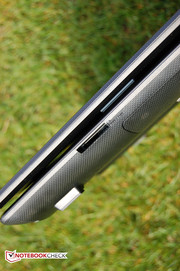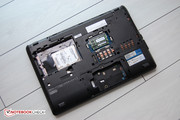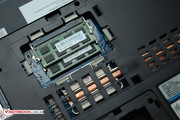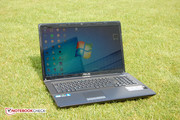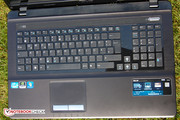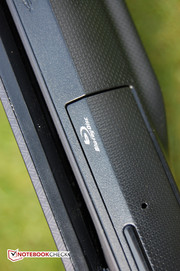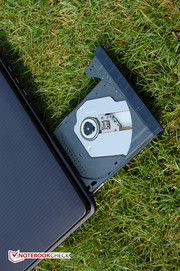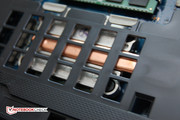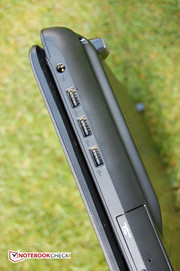Review Asus K93SM-YZ085V Notebook

"The air is thinner at the top" - this also applies to desktop replacement notebooks with a display size upwards of 18 inches. Our reviewed device, the Asus K93SM-YZ085V, certainly doesn't have a lot of competition in terms of size at the moment. At least off the top of our heads, the only rivals we can think of straight away are the Toshiba Qosmio X500, or the Acer Aspire Ethos 8951G. Notebooks such as this certainly don't belong to the mainstream. With Asus in on the other hand, 18.4 inch devices apparently appear to belong to the standard repertoire. There definitely doesn't seem to be any other way of explaining the fact that the Taiwanese manufacturer has only recently thoroughly overhauled the K93 series. Asus has proclaimed the four new models which can perform the tasks of a PC as high performance all-round notebooks, which can be considered to be full-scale desktop replacement notebooks for this reason. The price range of the current K93 series spans a range between 849 and 1149 Euros, whereby the K93SM-YZ085V we have for review is the top model with an Intel Core i7-2670QM processor. The more affordable models of the K93 family either have less powerful processors, or forgo other particular features, such as a Blu-ray drive, or a large amount of storage capacity or RAM. What they all have in common is the very big display, and other Asus specific features. Among these belong, among others, the Asus IceCool design, which is supposed to guarantee a permanently cool palm resting area, and the Palm Proof technology, which should prevent inadvertent touchpad entries by differentiating between a finger and a palm.
Case
The case of the Asus K93SM-YZ085V above all else stands out due to its sheer size. With dimensions of 441 x 295 x 42-55 millimeters, it could also serve a purpose as a small table top. The weight of 4.1 kilograms predestines the device more for an evening workout than for mobile use, although it clearly wasn't developed for this purpose as a self-proclaimed desktop replacement. The distance between the office desk and the living room can still easily be traversed with this sizeable device.
Optically the Asus K93SM can also fit in well in a living room. The dark brown colored surfaces with a herringbone pattern looks qualitative, although the shiny surface attracts finger prints and dust like moths are attracted to light. The display lid is pleasantly flat, and the frame could be a little finer at the top and bottom. The hinges have been made very robust. Something that is definitely required for this display size, especially since the two display hinges are located so far towards the outside of the case. They nevertheless failed to impress us entirely. Touching the display when it is open, or letting it go after changing the opening angle, results in the display still wobbling for several seconds - particularly when playing a movie this can be very annoying. The palm resting area is pleasantly wide, something that isn't a particular success when considering the entire size of the notebook though. The roughened surface provides enough grip when typing. The fact that the keyboard is enclosed in a glossy frame on the other hand has negative connotations when light falls upon it from unfavorable directions. What is also not perfect, is the tray for the internal Blu-ray drive. Fully extended this wobbles considerably, and should therefore be loaded with media very carefully. If not, it can quickly happen that the DVD is wedged between the drive and the case, and eventually gets scratched. Altogether the manufacturing quality of the Asus K93SM gives a good and stable impression. The gaps between panels also don't give an reason for criticism. Merely the battery lid can be pushed in to the extent of causing concern when the notebook is closed. Heavy items should therefore not be left standing on it.
Connectivity
A comprehensive range of features could certainly be expected from a desktop replacement notebook, which doesn't allow its applications to be curtailed by the absence of important additions. With the exception of exotic or so far still very rare interfaces such as FireWire or Thunderbolt, Asus have proven themselves to be very generous with their "giant notebooks". Along with the obligatory USB-2 ports - altogether 3 on the right side of the K93SM - there is also a USB 3.0 port available. This theoretically 10 times faster interface is located on the left side close towards the front, and is backwards compatible with slower USB standards. Also on the left side are a Gigabit LAN port, and VGA and HDMI interfaces for connecting external monitors or a television. A DVI interface is not provided, whereby the HDMI port can also be used for driving monitors with a DVI input by using an adapter. The range of interfaces is completed by two 3.5 mm mini-jack sockets for line-in and line-out audio, as well as a memory card slot on the front left of the device. The slot accepts MMC and SD cards, as well as Memory Sticks. For the increasingly popular microSD cards, an adapter is required.
Communication
Even though the Asus K93SM-YZ085V is the top model in its series, it is nevertheless still missing Bluetooth for short-range communications. This may appear to be inconsequential at first glance, but if the notebook is supposed to replace a PC entirely, Bluetooth should definitely be included - for example for synchronizing smartphones or connecting to headsets for video telephony. A webcam is included, and is embedded into the upper display frame. Apart from this, Asus provides the usual standard communication options. The WLAN module supports 802.11b/g/n, and thus provides a net data rate of up to 240 Mbps, although the K93SM only transmits using the excessively utilized 2.4 GHz band, and the 5 GHz band is not supported. Hard-wired LAN connections operate using Gigabit Ethernet, something that can also be expected in the mean time.
Accessories
The accessories included with the delivery don't provide a lot of cause for discussion: Along with the device itself and the AC adapter, there is only a thin manual, a battery notice, a warranty booklet, and a notice that the manufacturer no longer includes recovery DVDs. Furthermore there is already a corresponding partition on the hard drive, which can be used for restoring Windows, or for creating a recovery DVD.
Maintenance
On the bottom of the notebook, there are two openings intended for being opened by users. The panel providing access to a compartment where a second hard drive can be installed is secured by a single screw. The panel concealing the primary hard drive, RAM and the battery, is secured by four screws. Also worthy of note is that the Asus K93SM is also able to operate without a battery. Attempting to free the cooling fan from dust requires extended access to the inside of the device. Provision for this is not provided by the manufacturer, and associated warranty claims as a result of this "operation on the open heart" are likely to be rejected if things go wrong. Out of consideration for the provider of the reviewed device, we have also forgone opening the device to a greater extent.
Warranty
As far as the warranty is concerned, there is a standard warranty included, which lasts 24 months in Germany and Austria, and includes a Pick-Up and Return Service. Asus also provides further options though. The optional Asus warranty extension package extends the duration to three years. As an alternative the device can also be handed in to any DHL branch in Germany as part of the Carry-In Service.
Input Devices
Keyboard
The sheer size of the 18.4 inch notebook, is especially beneficial for the keyboard and the palm resting area. It occupies almost the same space as a classic desktop keyboard, and also contains four cursor keys as well as a full-fledged numeric keypad. The chiclet model is able to make a convincing impression with a clearly defined pressure point, and sufficient key travel. The space bar is a little narrow in typical notebook fashion. Thanks to the robustness of the case in this region, the surface only dents in very marginally while typing. The matte surface prevents the keys being reflective, and is able to stand out positively from the glossy surfaces surrounding the keyboard. The location of frequently used keys, such as "Delete" or "Home" requires a bit of getting used to, especially when switching from a desktop keyboard. After a few days most of them can be found blindly though.
Touchpad
When it comes to the touchpad, Asus has opted for multi-touch technology. It may only provide a limited number of gestures, such as pinch-to-zoom, but these work flawlessly. Generally the touchpad leaves a good impression overall. It can be used accurately, is sufficiently dimensioned, and doesn't have a hard edge between the palm resting area and the touchpad, which could be disturbing while typing. The palm recognition technology praised by Asus works well as far as possible, and does what can be expected. Since the touchpad itself can be used as the left mouse button, the separate button itself is likely not to be used very often. The operation of both of the mouse buttons is nevertheless perfectly adequate.
Display
Straight away when the Asus K93SM-YZ085V is opened, its a bit like looking into a mirror. As nice as reflective displays may look, they tend to incur more disadvantages than advantages. Nevertheless, especially in the consumer area, glossy displays tend to be a popular choice. Although the colors stand out more with games and movies, the annoying reflections aren't alleviated by this. This is also the case with the Asus K93SM. Particularly when watching movies the surroundings should be kept dark. Otherwise, finding the best display opening angle can be frustrating task. Meanwhile the low viewing angle stability of the LED backlit TN panel sets strict limits. While colors and contrast still remain relatively stable from the sides, the usable vertical viewing angle range is very limited. When moving the display away the colors invert very quickly, and the whole display becomes very dark. In the opposite direction the display quickly becomes very bright, and the contrast quickly drops. An optimal representation could merely be achieved by us within a range of 25 degrees. In general the display doesn't make a very good impression overall. The details: The maximum brightness lies at 213 cd/m², and is sufficient for daylight illuminated rooms. Outdoors this can become problematic in terms of legibility. Compared to the middle, the brightness is a little lower at the lower right and left edges of the screen although the differences aren't clearly visible. In addition there are also no bright areas visible.
| |||||||||||||||||||||||||
Brightness Distribution: 86 %
Center on Battery: 213 cd/m²
Contrast: 190:1 (Black: 1.12 cd/m²)
57.9% AdobeRGB 1998 (Argyll 3D)
80% sRGB (Argyll 3D)
56% Display P3 (Argyll 3D)
Although the luminance may still be on a comparatively high level, the contrast is rather dim. As a result of the relatively low black level of 1.12 cd/m², the contrast ratio is at a mere 190:1. With this the Asus K93SM may still belong to the upper mid-range of TN panels, but objectively the contrast is still meager. This is especially noticeable during dark movie scenes and games. The colors in comparison are relatively saturated and accurate, as long as the viewing angle is right.
A desktop replacement notebook has to be capable of performing all tasks in most cases, including for example image editing. In this case a relatively good coverage of the sRGB color space is an advantage, not to mention the Adobe RGB color space, although such high demands are only really relevant in the professional domain. The display of the Asus K93SM covers the sRGB color space by 85.4 percent. Surely not an exceptional achievement, but for an LED display using TN technology this is still well within the acceptable range. In order to show what one of the best notebook displays in recent years is capable of, we compared the color space of the Asus K93SM with that of the HP EliteBook 8740w mobile workstation. This may be a comparison of apples in oranges - but nevertheless very informative.
During outdoor use the Asus K93SM doesn't make a particularly good impression. On the one hand the brightness is not sufficiently high for sunny surroundings, while on the other, the display is so reflective in unfavorable lighting conditions that it would even be possible to use it to shave or apply makeup.
Performance
Processor: Intel Core i7-2670QM
In the hierarchy of Core-i7 models from Intel, the i7-2670QM positions itself approximately in the middle. It is based on the current Sandy Bridge architecture, and built using the 32 nanometer manufacturing process. As a quad-core CPU, the processor provides four cores, and can process up to eight threads simultaneously thanks to Hyper-Threading technology. The higher power consumption compared to dual-core models, predestines the Intel Core i7-2670QM for use in big notebooks, where the mobility doesn't play such an important role. As far as performance is concerned, the processor should be sufficient for all tasks that a desktop replacement notebook should be capable of performing.
Integrated into the CPU is a Intel HD Graphics 3000 graphics chip, which shares the Level 3 cache with the CPU. As long as no 3D calculations are required, the integrated graphics chip requires significantly less power compared to its discrete counterparts. On the other hand, the CPU performance is reduced to a marginal extent.
Using Turbo-Boost technology, the CPU and GPU clock speed are temporarily increased if necessary, providing sufficient cooling is available. For the GPU the range lies between 650 MHz and 1100 MHz. The cores of the processor officially clocked at 2.2 GHz reach a maximum of 2.8 GHz when all the cores are over-clocked. With two cores overclocked the maximum clock speed lies at 3.0 GHz, and with a single core the clock speed dynamically goes up to 3.1 GHz.
CPU Performance
The results of the Cinebench CPU benchmarks don't provide any surprises. Thus the Asus K93SM is among good company, and takes its place in line with other all-round notebooks using the same CPU. The Turbo-Boost of the Intel Core i7-2670QM CPU works flawlessly. We were nevertheless able to observe some throttling. During the OpenGL test in Cinebench R11.5, the CPU clock speed is regularly reduced to its minimum of 800 MHz. The resultant score is nevertheless still acceptable overall.
System Performance
The performance of the whole system is more or less average considering the adopted components, and the targeted application area as a desktop replacement. The score of just about 8000 points in PC Mark Vantage conforms to other all-round notebooks. An average PC can almost definitely be replaced by the reviewed device wholeheartedly. Exceptional performance for 3D games with a high resolution, or for video editing, shouldn't be expected though.
| PCMark Vantage Result | 7891 points | |
| PCMark 7 Score | 2223 points | |
Help | ||
Mass Storage
The trend for notebooks at the moment is for a hybrid combination in terms of the hard drives; with a faster SSD for the operating system, and a large capacity HDD for storing data. Asus has not opted for this solution, and instead "only" includes a traditional hard drive with one Terabyte of storage capacity. Since the K93 series certainly isn't part of the high-performance class, we can understand this decision - especially since the price of the notebook can remain within acceptable limits as a result. In addition to this, users still have all the options available thanks to the second HDD shaft, allowing for the an additional HDD or faster SSD to be installed. The top model in the K93 family is equipped with a 2.5 inch Seagate Momentus (model: ST1000LM024) by Asus, which has 8 MBytes of cache, and operates with a rotational speed of 5400 rpm. This certainly doesn't make the 18.4 inch notebook a sprinter, as attested by the CrystalDiskMark 3.0 benchmark. The HDD benchmark only gives the Seagate hard drive average results. For sequential reading and writing, the hard drive reaches about 90 MB/s. The average access time of 20 ms, determined by HD Tune, doesn't stand out either.
Graphics card NVIDIA GeForce GT 630M
Asus may have opted for a relatively up-to-date discrete graphics card, but the GeForce GT 630M still belongs among the weaker models in Nvidia's portfolio. Based on an identical chip to its sister models GeForce GT 540M, 550M and 620M, it contains 96 shaders. One GB of DDR3 graphics memory is addressed via a 128-bit interface. The clock speeds for core, shaders and graphics memory, are 672 MHz, 1344 MHz and 900 MHz respectively.
The driver installed on the reviewed device is not exactly the most up-to-date version, whereby the ForceWare 285.64 release date was in October of 2011.
Among the most interesting features is the Bitstreaming of HD audio signals via HDMI out. Thus the multi-channel receiver can be used as a lossless audio source. Thanks to PureVideo HD, all important video codecs can be decoded directly on the graphics card. Physics calculations can also be off-loaded to the GPU with the help of PhysX. For simultaneous 3D calculations the performance isn't quite sufficient though.
Switching between the integrated and discrete graphics solutions takes place automatically by the way - Nvidia refers to the corresponding technology as Optimus.
| 3DMark 06 Standard Score | 8344 points | |
| 3DMark Vantage P Result | 4568 points | |
| 3DMark 11 Performance | 1118 points | |
Help | ||
Gaming Performance
As a desktop notebook, the Asus K93SM-YZ085V will also have to fulfill the role of a gaming device from time to time. The discrete Nvidia GeForce GT 630M isn't able to perform any miracles though. Nvidia themselves rank the graphics card into the lower mid-range, and the performance is also on a corresponding level. In most cases this is absolutely sufficient for older games, but the graphics card can quickly reach its limits with more up-to-date games. While Anno 2070 and Battlefield 3 can still be played smoothly with low detail settings, things already start getting tight with medium settings. Battlefield 3 already starts to judder considerably in this scenario. The highest detail settings can only be used with the Asus K93SM for less demanding simulations, such as Fifa 12 for example. Altogether, the gaming performance is average, it should nevertheless be sufficient for occasional gamers. This comprehensive overview provides a good idea of which games can be played smoothly with which graphics cards, especially with the reviewed GT 630M.
Emissions
System Noise
On the subject of emissions, in many cases the same principles apply to notebooks as well as cars: Bigger models are louder and use more power. The reviewed 18.4 inch model from Asus isn't an exception either. While the system noise is still pleasantly low in an idle state with the power saving mode activated, it increases considerably when subjected to a high processing load. During the stress test with Furmark and Prime95, we measured a value just over 40 dB(A). This already lies on a par with a normal conversation, and is no longer pleasant in an office or living room environment. During normal use, the Asus nevertheless doesn't stand out annoyingly - merely the cooling fan switches on for a few seconds at a time occasionally. In very quiet surroundings, the faint humming of the hard drive is also audible. When playing a DVD or Blu-ray, the included drive manufactured by Matshita is constantly noticeable, and is even louder than quiet listening volumes. Vibrations on the other hand aren't emitted. Thus the Asus K93SM-YZ085V is probably not the first choice for very noise sensitive users.
Noise level
| Idle |
| 30.3 / 31.3 / 31.7 dB(A) |
| HDD |
| 30.8 dB(A) |
| DVD |
| 36.2 / dB(A) |
| Load |
| 36.2 / 40.2 dB(A) |
 | ||
30 dB silent 40 dB(A) audible 50 dB(A) loud |
||
min: | ||
Temperature
Asus promises a permanently cool palm resting area thanks to its proprietary IceCool design. These claims are substantiated by our temperature measurements without any doubt. The whole area in front of the keyboard never gets any warmer than 26.2 degrees Celsius, which feels pleasantly cool. The right side of the device also remains cool, while merely the middle and the left area of the case, where the cooling system and the corresponding air vents are located, become warm. With a good maximum of 38 degrees, the heat generated remains well within limits though, and this characteristic also applies to the bottom of the device. Anyone intending to use a notebook of this size on their lap, should be more concerned about the weight of the device, than its temperature. The AC adapter reaches a temperature of 49.3 degrees. Other devices can get considerably hotter in some cases. The air blown out of the device can reach temperatures of 60 degrees with a high processing load though, which is very warm, and is comparable to a hair dryer at a medium setting.
While we can confirm that the case keeps a "cool head", the internal components do get reasonably hot at times. During the stress test for example, the CPU core reaches a temperature of 97 degrees. This leads to throttling time and again, although the CPU clock speed only falls to the minimum 800 MHz for very short periods of time. These temperatures may not be of particular concern for the individual components, but they could nevertheless still be lower in our opinion. At times the GPU of the graphics card even reaches a temperature of 91 degrees.
Whether or not the throttling is also relevant during daily use, was tested by us by running 3DMark 06 directly after several hours of a stress test. If the results are more or less equivalent to those achieved in a "cool" scenario, then there is generally nothing to be concerned about. In the case of the Asus K93SM, this was precisely the case. The 3DMark benchmark delivers the same score after the stress test.
(+) The maximum temperature on the upper side is 38.2 °C / 101 F, compared to the average of 40.4 °C / 105 F, ranging from 21.2 to 68.8 °C for the class Gaming.
(+) The bottom heats up to a maximum of 37.6 °C / 100 F, compared to the average of 43.3 °C / 110 F
(+) In idle usage, the average temperature for the upper side is 25.1 °C / 77 F, compared to the device average of 33.9 °C / 93 F.
(+) The palmrests and touchpad are cooler than skin temperature with a maximum of 26.2 °C / 79.2 F and are therefore cool to the touch.
(+) The average temperature of the palmrest area of similar devices was 28.8 °C / 83.8 F (+2.6 °C / 4.6 F).
Speakers
Notebooks don't provide a good basis for loud and clear audio reproduction, as a result of their limited resonant properties. The Asus K93SM is also not an exception in this case, despite its large size. Something we did like was the positioning of the speakers above the keyboard. This prevents them from being covered while working or playing games. The maximum volume is more than enough. Low frequency bass sounds can't be provided by the device however. Even high frequencies are limited, so that mid-range frequencies dominate. Overall the speakers also sound slightly muffled. For listening to a movie, music on the side while working, or a telephone conversation, they should be good enough though. Anyone that values good audio quality, would be still well advised to invest in a pair of good headphones.
Battery Life
Power Consumption
A bigger case should also have room for a large battery. Thus we were all the more surprised by the relatively compact battery with 56 Wh. The Asus K93SM fortunately uses the available power relatively sparingly most of the time though. In an idle state the device only consumes between 10 Watts and 17 Watts, despite its large display. Even with a high processing load, the power consumption remains within limits most of the time. Only when the discrete graphics card is activated, does the power consumption rise significantly. Nevertheless, the maximum power consumption of 109.4 Watts is still significantly lower than that of similar competitor models.
| Off / Standby | |
| Idle | |
| Load |
|
Key:
min: | |
Battery Runtime
As a result of the moderate power consumption, the battery life also reaches decent lengths. The maximum battery life determined by BatteryEater is over five and a half hours. Surfing with medium brightness over WLAN with the Asus K93SM, is possible for four and a half hours. What really surprised us though, is that this sizable notebook doesn't run out of steam prematurely while playing DVDs and Blu-rays either. 3:21 hours should be enough for almost all DVDs. During Blu-ray the battery lasts 2:48 hours. So the curtain could close somewhat to early during some very long dramas. These results are nevertheless satisfactory by all means. However, if the Asus K93SM is really fully utilized, the battery life shrinks to a mere 59 minutes. The question is: Who actually plays games when the notebook is battery powered?
Verdict
With the Asus K93SM-YZ085V, the manufacturer Asus has provided exactly what it has promised: A full-fledged desktop replacement notebook. Let alone the 18.4 inch display is bigger than some desktop monitors that can be found in some households. As one of the decisive features of a notebook, the display often receives particular consideration. In the case of the Asus K93SM, this provides for advantages and disadvantages. The TN panel clearly shows its technological characteristics. The viewing angle stability can be very annoying for example. Furthermore, the black level, and the resulting contrast, tarnish the impression even to an even greater extent - especially during movies and games.
The big Asus notebook can however score points with its flawless manufacturing quality, the ergonomic keyboard, and the reliably functioning touchpad. The included features are also well rounded off, whereby we would have hoped for short-range Bluetooth communication in the top model of the series. For mobile use, the device is only useful to a limited extent. Alone the weight of the device will provide an obstacle for users. Along with this, the very reflective display is also likely to dampen the fun outdoors. At least the battery life could allow for longer excursions without a power source. As far as games are concerned, the Asus K93SM is only useful to a limited extent, due to its mid-range graphics card. The fact that the CPU gets as hot as it does despite the size of the case, and still has to be throttled, also doesn't stand out as a positive aspect.




